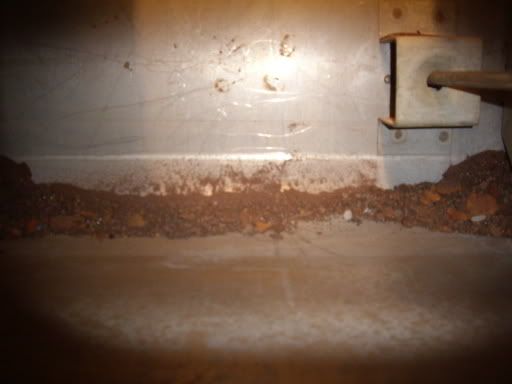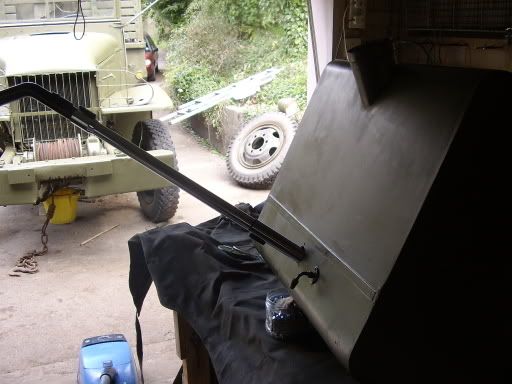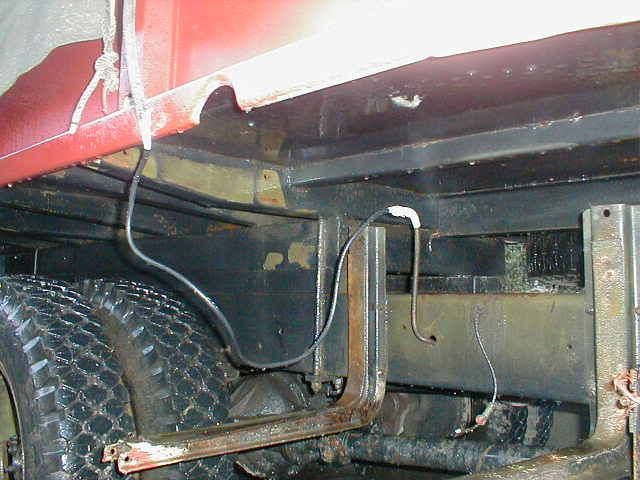Page 1 of 1
Fuel gauge plunger & sender removal.
Posted: Tue Apr 18, 2006 3:27 pm
by Ledog
Hi all.
I'll have to change my fuel sender that seems to be defective.
I would like to know if I can remove it with the fuel tank in place or if I'll have to take the tank off? I have a cargo 353 truck with a few inches space between the tank and the bed.
Posted: Tue Apr 18, 2006 8:05 pm
by snow man
If your tank is on the right side [passenger side ] under the bed you will need to remove the tank ,i could not get mine out!!
Posted: Wed Apr 19, 2006 4:02 am
by Ledog
Ok thanks.

Posted: Sun Apr 23, 2006 7:20 pm
by Ledog
And how can I remove the tank without getting flooded with the gas that is still in the line to the pump? I mean, when disassembling the pipe line on top of the tank.
The manual lever on my fuel pump is broken. How can I do to prime the pump when reassembled?
Posted: Mon Apr 24, 2006 12:17 am
by armydriver
I have always felt that getting some gasoline on you is like getting the grease and oil on you. it is just part of processes of owning old military vehicles. I don't think you can remove the fuel line without spilling some gasoline, but the tank will have to come off to remove the sending unit. You might want to drain as much gasoline out of the tank with the drain plug in the bottom into clean cans as this can be a lot of weight when removing the tank from the supports.
Posted: Mon Apr 24, 2006 6:35 am
by dr deuce
You could raise the cargo bed too.
Posted: Mon Apr 24, 2006 8:48 am
by armydriver
Thats an idea. I Never thought of that. Thanks Doc.
Posted: Wed May 03, 2006 5:42 am
by UK Jack
Posted: Wed May 03, 2006 7:59 am
by Ledog
Thanks Jack!
And what about priming the pump when reassembled?
Posted: Wed May 03, 2006 9:18 am
by UK Jack
No worries.
I just turned her over and up it went, thankfully it isn't like a diesel engine

Posted: Fri May 05, 2006 6:15 pm
by Ledog
In fact, I don't know what is the problem with the sender. I don't know if it really the sender that is defective. I intalled the votage reducer (12 to 6 Volts) from Jim Carter Classic Truck Parts. Then, as it was not functionning, I did some tests like explained in the manual furnished with the reducer. that's how I came with the idea it's the sender that's defective. I hope it won't be given away. I'll have to buy a new sender before.
Tank senders
Posted: Sat May 06, 2006 3:36 am
by Karoshi
AAA, tank senders have a habit of rusting up here in Europe, as condensation builds up in the tank, from warm days and cold nights.
The float mechanism simply stops working. Free it up and you might be OK. A simple test with a meter will tell you if the "electrical" part is functioning OK.
Posted: Sat May 06, 2006 5:03 am
by Ledog
I usually understand well how things do work when I can part them. I'm curious to see how it looks like.
Float Unit workings
Posted: Sat May 06, 2006 5:21 pm
by Karoshi
Hi 777, The tank unit looks like this; the float rises and falls with the level in the tank, and as it does it turns a vertical shaft through a gear mechanism.
The unit is shown here on its side, the round fitting flange should of course be at the top!
FULL

The turning shaft moves an electrical contact over a resistance winding mounted in the top circular housing. Altering the resistance, adjusts the voltage to the Fuel Gauge, which in turn controls the amount of needle movement.
EMPTY

Hope that helps you.
Posted: Sat May 06, 2006 6:16 pm
by dr deuce
If you accidently short the + lead to the fuel gauge to the sender lead, the sender is ALL done!
Be careful!
If you are doing 12v, you need a regulator, not a resistor. The regulator produces 6v from 0 load up to the current limit of the regulator. Last time I bought one it was ~$18 from JC Whitney. It has an additional lead that has to be connected to ground.
Re:
Posted: Sat May 06, 2006 9:11 pm
by Ledog
dr deuce wrote:If you are doing 12v, you need a regulator, not a resistor. The regulator produces 6v from 0 load up to the current limit of the regulator. Last time I bought one it was ~$18 from JC Taylor. It has an additional lead that has to be connected to ground.
That's what I bought. Took your advice.

Posted: Sun May 07, 2006 6:45 am
by dr deuce
Make sure that the tank, or at least the sender is grounded. I usually connect a wire with a lug and star washer on it to one of the sender mounting screws and connect the other end to a convient place on the frame.
No ground, no work....
Disconnect the wire from the sender terminal and see if the resistance changes when it moves up and down.
Re:
Posted: Sun May 07, 2006 7:41 am
by Ledog
dr deuce wrote:Disconnect the wire from the sender terminal and see if the resistance changes when it moves up and down.
The only one test I haven't done yet.

Posted: Fri May 19, 2006 1:55 pm
by Ledog
Today, I have checked the resistor of the plunger. There is not continuity at all throught the sender. Nothing moves when moving the plunger.
It seems I'll need a new sender. I'll let you know in a few days.
Posted: Fri May 19, 2006 5:31 pm
by dr deuce
Yup!




